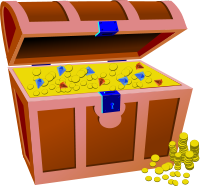A token economy is a behavior change system. Token economies utilize positive reinforcement for display of the target behavior(s).
It consists of three major components:
(a) Specific list of TARGET BEHAVIORS (e.g., listening to the teacher, following parent directives, completing work, completing list of chores at home, sitting appropriately in the car) and what the TARGET BEHAVIORS look like (e.g., sitting with your bottom in the car seat while keeping the seat belt on, setting the table at dinner time)
(b) Tokens that the student receives for EMITTING TARGET BEHAVIORS (e.g., pennies, checkers, stickers, points, smiley faces)
(c) A MENU of BACKUP REINFORCERS that are PURCHASED with Tokens (e.g., computer time, swimming outing, riding bicycle outside, watching a favorite movie, choice for dinner, outing to the zoo, purchase of candy bar after grocery shopping trip)
